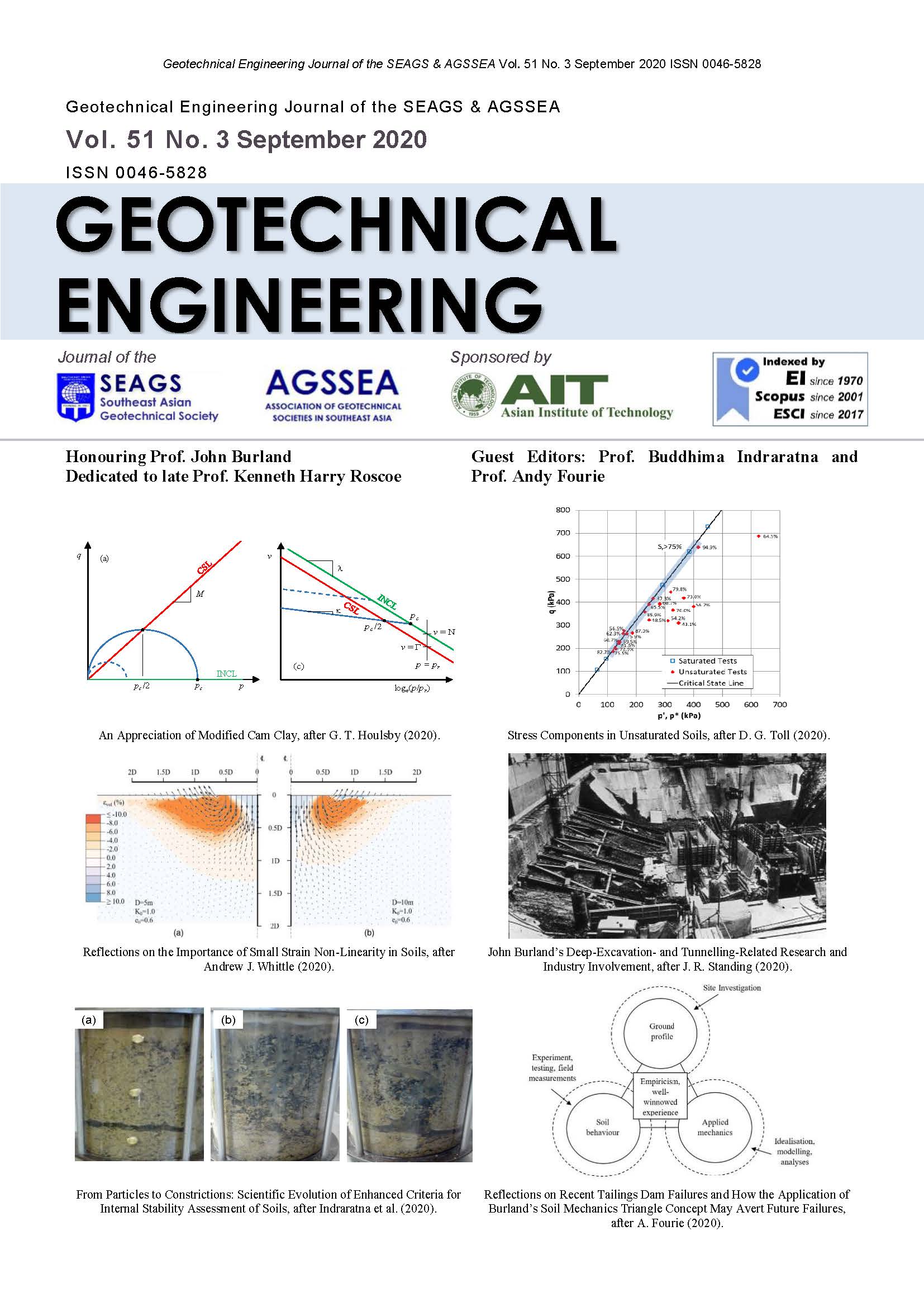Stress Components in Unsaturated Soils
Main Article Content
Abstract
In 1959, Bishop published his classic paper on “effective stress” in unsaturated soils, combining together the components of net stress and suction into a single stress variable using the empirical factor. Jennings and Burland (1962) criticised this approach, identifying limitations in the use of an “effective stress”. In particular, the approach failed to explain volumetric collapse of soil when wetted. Burland followed up this criticism in 1965 by pointing out that the role of suction was two-fold; not only did it increase the contact stress between particles but the presence of air-water interfaces (menisci) also had a stabilising effect. He suggested that we should not try to combine the stress variables into a single “effective stress” but that we should treat the two stress components of net stress and suction differently. This approach was adopted by Fredlund and Morgenstern (1977) and led to the widely used b approach. Thus, in critiquing the Bishop approach, John Burland had a highly significant input into the direction of unsaturated soil research and practice over a number of decades. In this paper, Burland’s contribution to the debate on stress components in unsaturated soils will be examined through reinterpretation of a set of experimental data from triaxial testing of an unsaturated lateritic gravel. The results confirm that attempting to combine net stress and suction into a single variable is not sufficient for interpreting unsaturated soil behaviour.
Article Details

This work is licensed under a Creative Commons Attribution-NonCommercial-NoDerivatives 4.0 International License.
Copyright © 2019 Association of Geotechnical Societies in Southeast Asia (AGSSEA) - Southeast Asian Geotechnical Society (SEAGS).


